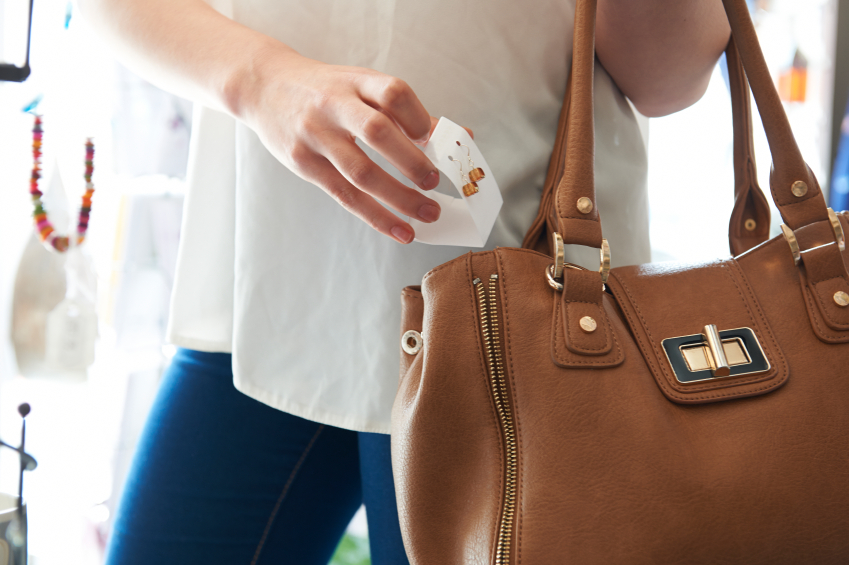Shoplifting - A Fundamental Overview

March 2010 - PSPA Editorial Staff
Shoplifting (also known as boosting and five-finger discount) are popular terms used for theft of goods from a retail establishment. The word shrinkage is not a synonym for shoplifting, as it includes merchandise lost by means other than shoplifting.
Shoplifting is the act of obtaining goods from an establishment in which they are displayed for sale, without paying for them. Usually shoplifting involves concealing items on the person or an accomplice, and leaving the store without paying. However, shoplifting can also include price switching (swapping the price labels of different goods), “refund fraud,” (returning merchandise after it has been used) and "grazing" (eating/sampling a store's goods while in the store). Retailers report that shoplifting has a significant effect on their bottom line, stating that about six percent (0.6%) of all inventories disappear to shoplifters.
Most shoplifters are amateurs. In several countries, criminal flash mobs enter stores with the intention of stealing merchandise by distracting staff. However, there are people and groups who make their living from shoplifting, who tend to be more skilled. Generally, criminal theft involves taking possession of property illegally. In self-service shops, customers are allowed by the property owner to take physical possession of the property by holding or moving it. This leaves areas of ambiguity that could criminalize some people for simple mistakes, such as accidental hiding of a small item or forgetting to pay to it. For this reason penalties for shoplifting are often lower than those for general theft. Few jurisdictions have specific shoplifting legislation with which to differentiate it from other forms of theft, so reduced penalties are usually at a judge's discretion. Most retailers are aware of the seriousness of making a false arrest, and will only attempt to approach and/or apprehend a person if their guilt is undoubted. Depending on local laws, arrests made by anyone other than law enforcement officers may be questionable and/or found to be illegal.
The first documented shoplifting is estimated to have started in 16th-century London. By the early 19th century, shoplifting was believed to be primarily a female activity. In the 1960s, shoplifting began to be redefined itself again, this time as a political act. Researchers divide shoplifters into two categories: "boosters," professionals who resell what they steal, and "snitches," amateurs who steal for their personal use.
Shoplifting is considered a form of theft and is subject to prosecution. Shoplifting is one of the most common crimes. Shoplifting is reported to peak between the hours of 3 p.m. and 4 p.m., and is at its lowest from 6 a.m. and 7 a.m. In the United States, shoplifting increases during the holiday season, and arrest rates increase during times when students are off from school in such cases as spring break.
The most commonly shoplifted item was cigarettes, until stores started keeping them behind the cash register. Commonly shoplifted items are usually small and easy to hide, such as groceries, especially steak and instant coffee, razor blades and cartridges, small technology items such as music players, smartphones, computer flash drives, earphones, music and video disks, cosmetics, jewelry, books, pregnancy tests, and clothing to name just a few.
Economists say shoplifting is common because it is a relatively unskilled crime with low entry barriers that can be fitted into a normal lifestyle. People of every nation, race, ethnicity, gender, and social class shoplift. Originally, analysis of data about apprehended shoplifters and interviews with store detectives suggested that females were almost twice as likely as males to shoplift. However, since 1980 data suggest that males are equally or more likely to shoplift than females. The average shoplifter first shoplifted at the age of ten: shoplifting tends to peak in adolescence then steadily declines thereafter. People of all races shoplift equally, and poor people shoplift only slightly more than rich people. Men tend to shoplift using knapsacks, and women using strollers. When caught, a shoplifter has on average two hundred dollars ($200.00) worth of unpaid-for merchandise.
Shoplifting may be prevented and detected. Closed-circuit television (CCTV) monitoring is an important anti-shoplifting technology. Electronic article surveillance (EAS) is another method of inventory protection and radio-frequency identification (RFID) is an anti-employee-theft and anti-shoplifting technology. Loss prevention personnel can consist of both uniformed officers and plain-clothed store detectives. Large department stores will use both and smaller stores will use one or the other dependent on their shrink strategy. Store detectives will patrol the store acting as if they are real shoppers. The presence of uniformed officers acts as a deterrent to shoplifting activity and they are mostly used by high-end retail establishments. Shoppers in some stores are asked when leaving the premises to have their purchases checked against the receipt. Some expensive merchandise will be displayed in a locked case requiring a store employee to retrieve items at a customer's request. The customer is either required to purchase the merchandise immediately or it is left at the checkout area for the customer to purchase when finishing shopping. Many stores also lock music and video disks, and video games in locking cases, which can only be opened by the checkout operator once the item has gone through the checkout. Some stores will use dummy cases, also known as "dead boxes," where the box or case on the shelf is entirely empty and the customer will not be given the item they have paid for until the transaction has been completed, usually by other store staff.






